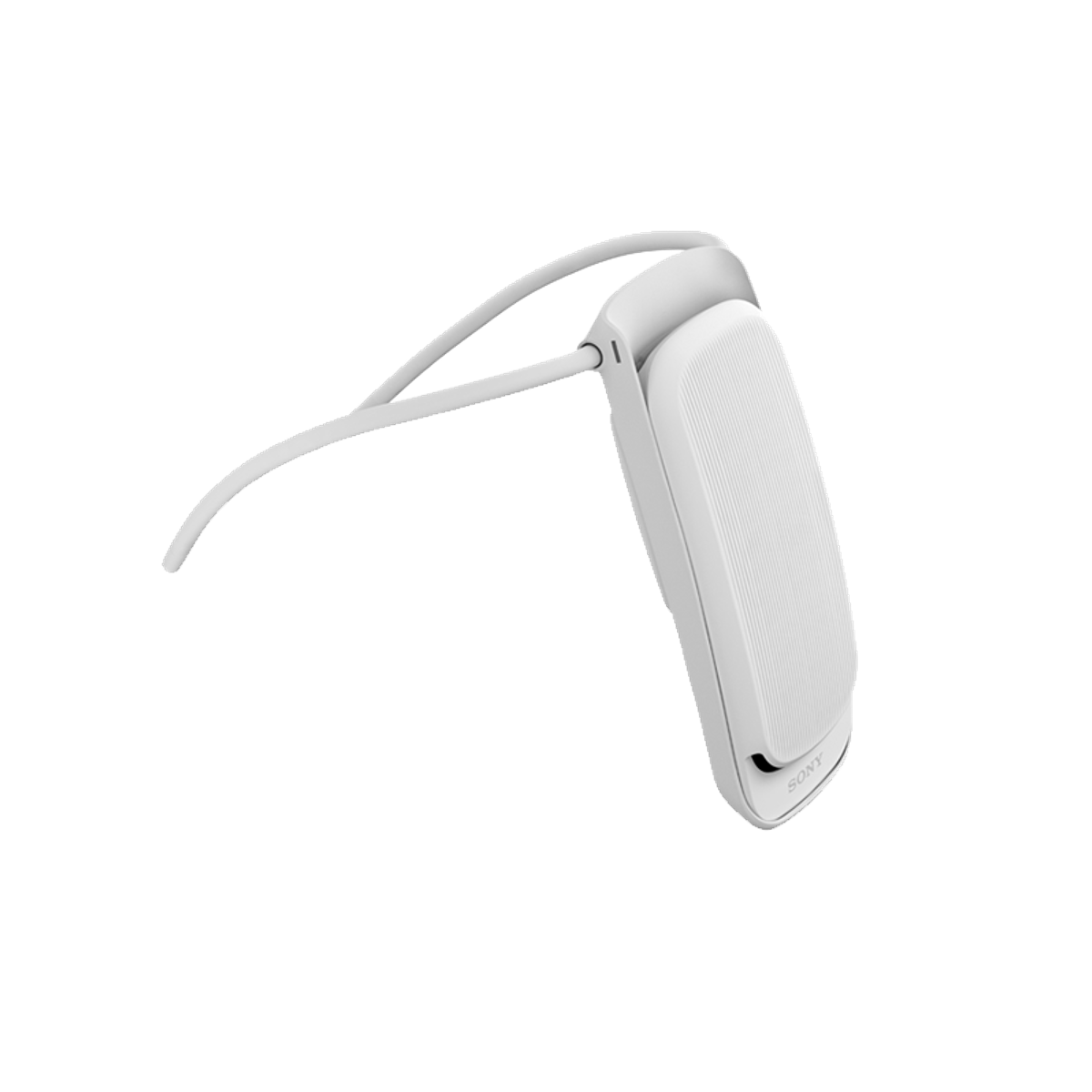How to reduce flickering, which is partial or total discoloration of an image or horizontal banding
There are several ways to reduce the effect of flicker.
Note: Some functions may not be available depending on the model unit. For details, refer to your camera's Help Guide.
Setting e-Front Curtain Shutter to Off, or Shutter Type to Mechanical Shutter (when shooting still images)
You can reduce the effect of flicker by setting e-Front Curtain Shutter to Off, or Shutter Type to Mechanical Shutter if your camera is equipped with these functions.
Changing the shutter speed (when shooting still images)
The effect of flicker can be reduced by changing the shutter speed.
The shutter speed that is effective in reducing the flicker phenomenon varies depending on the region where you are using the camera.
In regions where the frequency of the power source is 50 Hz, the recommended shutter speed is 1/50 sec or 1/100 sec, whereas in regions where the frequency is 60 Hz, 1/60 sec or 1/120 sec is recommended.
Shutter speed: 1/200 sec
Shutter speed: 1/50 sec
Using the Anti-flicker Shoot. function when shooting still images, or the Var. Shutter function when shooting still images or movies
Flicker issues appear as banding in images captured with a focal-plane shutter under flickering light sources, because moments when the lighting is bright and when it is dark are captured at different positions on the image sensor.
For details, refer to the Partial or total discoloration of the image may occur, or horizontal banding may appear (flickering). article.
Two functions are available to reduce the effect of flickering – Anti-flicker Shoot. and Var. Shutter – and each function is effective in different scenes.
| Features and shooting conditions | Anti-flicker Shoot. | Var. Shutter |
|---|---|---|
| Features | The camera can time the shooting of images to moments when flickering will have less of an impact by detecting the flickering frequency automatically. | You can manually adjust the shutter speed while checking the impact of flickering on the monitor. On some models, a shutter speed where flicker will have less of an impact is selected automatically. Press the center of the control wheel to automatically detect and eliminate flicker. |
| Still images/movies | Still images only | Still images/movies |
| Shutter Type | Mechanical Shutter (For ILCE-1, an Electronic Shutter is also available) | Mechanical Shutter *1/Electronic Shutter |
| Exposure Mode | P (Program Auto) /A (Aperture Priority) /S (Shutter Priority) /M (Manual Exposure) | S (Shutter Priority) /M (Manual Exposure) /Flexible Exp. Mode with the shutter speed adjusted manually |
| Types of flickering detectable | Flickering with a frequency of 100 Hz or 120 Hz (such as fluorescent light) only *2 | Flickering with a frequency of 100 Hz or 120 Hz (such as fluorescent light) and flickering with a frequency higher than 100 Hz or 120 Hz (such as LED light) |
- *1 The faster you set the shutter speed, the more likely there is to be a difference between the monitor display before shooting and the recorded image. Make sure that the impact of flickering is reduced in the recorded image.
- *2 Even when Anti-flicker Shoot. is set to On, the camera cannot detect flickering frequencies other than 100 Hz or 120 Hz.
Details about Anti-flicker Shoot. and Var. Shutter is provided below. Understand the characteristics of each, and try suitable settings to reduce flicker issues in your shots.
Using the Anti-flicker Shoot. function when shooting still images
Under fluorescent lighting that flickers at 100 Hz or 120 Hz, you can shoot images with reduced effect of flicker by operating the shutter curtains at the right moment. This is because the fluorescent light remains bright slightly longer than the duration of the movement of the mechanical shutter slit (or the running duration of the electronic shutter for ILCE-1).
The function used for this automatic adjustment of when the camera shoots is called anti-flicker shooting.
Differences in the speed of slit movement
The camera can perform the anti-flicker shooting function when shooting with a mechanical shutter. For ILCE-1, it is also available when shooting with an electronic shutter.
Some interchangeable lens cameras offer two shutter methods: mechanical shutter and electronic shutter. Each moves the slit at a different speed. Attempting to use anti-flicker shooting with an electronic shutter, other than for ILCE-1, would not be effective because the slit movement is slower. No matter when the shutter movement begins, the dark time during fluorescent light flickering cannot be avoided.
| Mechanical Shutter | Speed of slit movement: Fast (moves for approx. 4 milliseconds) Vibration/sound: Occurs |
|---|---|
| Electronic Shutter (silent shutter) |
Speed of slit movement: Slow (except ILCE-1) (moves for several dozen milliseconds) Vibration/sound: None |
Describing one type as an electronic shutter may make the movement seem faster, but this is not actually true.
Movement by the front and rear curtains of a mechanical shutter is fast because it is simply intended to block out light. In contrast, an electronic shutter resets one line of the image sensor after another to achieve front curtain movement, after which the role of the rear curtain is performed by reading the lines out, one by one. As this readout takes time, several dozen milliseconds are required to read the entire image sensor, line by line.
For this reason, slit movement by an electronic shutter takes longer. However, for the ILCE-1, the slit movement of the electronic shutter is as fast as that of the mechanical shutter.
Concept image of the Anti-flicker Shoot. function for still images
- A: The flickering frequency (100 Hz = 1/100 sec, 120 Hz = 1/120 sec)
- B: The timing of bright light
- C: The timing of dark light
- D: In normal shooting, when the shutter operates when the lighting is dark, the timing of exposure differs between the top and bottom of the screen, resulting in changes in brightness and color between the top and bottom of the captured image.
- E: With anti-flicker shooting, the camera detects flicker, and the shutter operates at the timing of bright light, resulting in better shooting results.
Anti-flicker shooting is only effective under lighting that flickers at 100 or 120 Hz, such as fluorescent lights.
Because LED light sources flicker at several hundred to thousands of Hz – a shorter interval than rapid shutter movement of 4 milliseconds – the slit cannot move from one edge to the other during the brief period when this lighting is bright, even if the camera could detect the flickering cycle. For this reason, the function is not effective in reducing issues from this flickering.
- Concept video of the case whereby anti-flicker shooting is performed under fluorescent lighting
Shutter movement occurs during the period (cycle) when fluorescent lights are bright, which makes the function effective when shooting under this lighting.
- Concept video of the case whereby anti-flicker shooting is performed under LED lighting
The flickering cycle is faster than any timing of shutter movement, which may result in images affected by banding.
Using the Var. Shutter function when shooting still images or movies
Occasionally you may prefer to shoot silently (with an electronic shutter) at stage performances under LED lighting, or you may want to use high-speed continuous shooting for sports events at venues with LED lighting and signage. In these cases, the high-resolution shutter function may help to reduce the effect of flicker.
This function reduces flicker issues by precisely matching the shutter speed to the flickering cycle.
While with normal increments for setting the shutter speed (1/3 or 1/2 step), it is difficult to match the flickering cycle, this function enables even finer adjustment of shutter speed to match the cycle and reduce flicker issues.
Why matching the flicker frequency and the shutter speed reduces the effect of flicker
The following figures show how images formed on the image sensor are gradually acquired as the shutter moves.
- A: Top edge of the screen
- B: Bottom edge of the screen
- C: Path of front curtain
- D: Path of rear curtain
- E: Shutter speed
- F: Time
Exposure takes place gradually, starting at the top edge of the image, indicating that exposure happens later for the bottom edge of the image.
Consider the next figure, which shows flickering as the shutter moves.
Note: Time is plotted horizontally, with light source flickering indicated as vertical bands.
- When the shutter speed does not match the flickering cycle
- Illustration of flickering superimposed on the diagram of the shutter slit movement
- A: Top edge of the screen
- B: Bottom edge of the screen
- C: Shutter speed
- D: Time
- E: Sample image
- Example: Image showing that the banding appears in the shooting result if it is seen on the monitor
Screen
Captured still image
- Illustration of flickering superimposed on the diagram of the shutter slit movement
- When the shutter speed is adjusted to match the flickering cycle
- Illustration of flickering superimposed on the diagram of the shutter slit movement
- A: Top edge of the screen
- B: Bottom edge of the screen
- C: Shutter speed
- D: Time
- E: Sample image
- Example: Image showing that the banding disappears in the shooting result if it is not seen on the monitor
Screen
Captured still image
- Illustration of flickering superimposed on the diagram of the shutter slit movement
Reduce the effects of flicker using the Var.Shutter function.
Follow the procedure below to reduce the effects of flicker using the Var.Shutter function.
Step 1 Set Var. Shutter to On and check the effect of flicker.
Set the camera as follows, and if the effect of flicker appears on the Var. Shutter Set. screen, fine-tune the high-resolution shutter speed so that the effect is reduced.
Note: Even when Var. Shutter is set to On, since it may be difficult to check the effects of flickering, we recommend shooting and checking in advance.
- Configure the camera.
When using the ILCE-9M2
Note: For the ILCE-9M2, this function can be used when the camera’s system software (firmware) is Ver. 2.00 or later.When using the ILCE-1, ILCE-7M4, ILCE-7RM5, ILCE-7CM2, ILCE-7CR or ILCE-6700
- Set the exposure mode to S (Shutter Priority) or M (Manual Exposure).
- Adjust the shutter speed to the desired setting.
- Focus on the subject.
- MENU →
(Camera Settings1) → Hi Frequency flicker → Var. Shutter → On
- MENU →
(Camera Settings1) → Hi Frequency flicker → Var. Shutter Set.
When using the ZV-E1, ZV-E10M2- Set the exposure mode to S (Shutter Priority), M (Manual Exposure) or Flexible Exp. Mode.
- Adjust the shutter speed to the desired setting.
- Focus on the subject.
- MENU →
(Shooting) or
(Shooting) → Shutter/Silent → Anti-flicker Set. → Var. Shutter→ On
- MENU →
(Shooting) or
(Shooting) → Shutter/Silent → Anti-flicker Set. → Var. Shutter Set.
- Set the exposure mode to S (Shutter Priority) or M (Manual Exposure).
- Adjust the shutter speed to the desired setting.
- Focus on the subject.
- MENU →
(Shooting) → Shutter/Silent → Anti-flicker Set. → Var. Shutter→ On
- MENU →
(Shooting) → Shutter/Silent → Anti-flicker Set. → Var. Shutter Set.
- Check on the monitor for flicker issues (banding) caused by LED lighting.
Example:
You can check the effect of flicker seen as banding in the video below. In this video, the ILCE-9M2 is used for the explanation.
Tip: Learn how to turn captions on or off when watching Internet videos from YouTube
Step 2 Fine-tune the high-resolution shutter speed so that the effect of flicker is reduced.
A shutter speed where flicker will have less of an impact can be selected either automatically or manually.
- Setting the shutter speed automatically (on cameras supporting the auto-setting function)
Press the center of the control wheel to automatically select a shutter speed where the flicker will have less of an impact. - Setting the shutter speed manually
When using the ILCE-1, ILCE-7M4, ILCE-7RM5, ILCE-9M2, ILCE-7CM2, ILCE-7CR or ILCE-6700
When using the ZV-E1, ZV-E10M2
On the Var. Shutter Set. screen, you can fine-tune the shutter speed with the front or rear dial or control wheel.
With Var. Shutter set to On, the shutter speed denominator is displayed as a decimal (indicating fine adjustment).Rear dial (Tv):
- Turn the rear dial to fine-tune the shutter speed to one of these settings: 250.6→253.3→256.0→258.8. (Actual values may vary.)
Front dial (Tv STEP):
- Turn the front dial to fine-tune the shutter speed to either an integral multiple of the initial value or to 1/[integral multiple]. Example: 125.3 (times 1/2) ← 250.6 → 501.3 (times 2)(Actual values may vary.)
- Control wheel:
- Turn the control wheel to fine-tune the shutter speed just as it is set using the dial assigned to Tv.
- Control wheel up/down:
- Press and hold the control wheel to fine-tune the shutter speed value more quickly.
- Fine-tune the shutter speed.
Continue to fine-tune the shutter speed with the rear dial (Tv) or control wheel, as you reduce or increase the speed until the effects of flickering are less noticeable. - Fine-tune the shutter speed by changing it to an integral multiple of the initial value.
If the effects of flickering are still noticeable despite fine-tuning the shutter speed, try turning the front dial (Tv STEP) to reduce the fine-tuned shutter speed.
After reducing the fine-tuned shutter speed with the front dial (Tv STEP), continue fine-tuning the speed until the effects of flickering are less noticeable.
Example: Flicker issues (banding) caused by LED lighting were reduced by fine-tuning the shutter speed.On the Var. Shutter Set. screen, you can fine-tune the shutter speed with the control dial or control wheel.
With Var. Shutter set to On, the shutter speed denominator is displayed as a decimal (indicating fine adjustment).- Control dial (Tv):
- Turn the control dial to fine-tune the shutter speed to one of these settings: 250.6→253.3→256.0→258.8. (Actual values may vary.)
- Control wheel (Tv STEP):
- Turn the control wheel to fine-tune the shutter speed to either an integral multiple of the initial value or to 1/[integral multiple]. Example: 125.3 (times 1/2) ← 250.6 → 501.3 (times 2)(Actual values may vary.)
- Control wheel up/down:
- Press and hold the control wheel to fine-tune the shutter speed value more quickly.
- Fine-tune the shutter speed.
Continue to fine-tune the shutter speed with the control dial (Tv), as you reduce or increase the speed until the effects of flickering are less noticeable. - Fine-tune the shutter speed by changing it to an integral multiple of the initial value.
If the effects of flickering are still noticeable despite fine-tuning the shutter speed, try turning the control wheel (Tv STEP) to reduce the fine-tuned shutter speed.
After reducing the fine-tuned shutter speed with the control wheel (Tv STEP), continue fine-tuning the speed until the effects of flickering are less noticeable.
Note: The camera screens are from the ILCE-9M2.You can check how the effect of flicker seen as banding is reduced in the video below. In this video, the ILCE-9M2 is used for the explanation.The shutter speed does not match the flickering cycle, resulting in banding caused by LED lighting to be visible on the screen.
As the shutter speed is adjusted, the appearance of banding changes.
When the shutter speed matches the flickering cycle, banding caused by LED lighting is no longer visible.
Tip: Learn how to turn captions on or off when watching Internet videos from YouTube
- Shoot.
Press the shutter button to shoot.
Please accept Youtube cookies to watch this video
Access your cookie preferences below and make sure to switch on the Youtube cookie under the 'Functional' section.
Related Articles
Register your product
Register your product information to enjoy after sales service
Terms & Condition
Product warranty and service Information
Repair Service
Online onsite service booking, Charging scheme, Repair status checking
Supplied Accessory Enquiry
Order supplied accessory
Contact Us
Hotline and service centre information





















